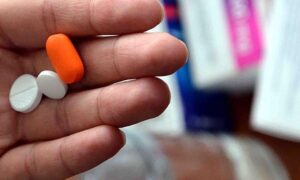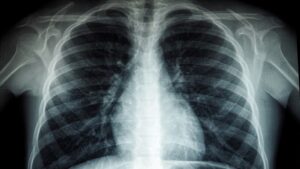[ad_1]
WHAT IS DUCHENNE MUSCULAR DYSTROPHY (DMD) DISEASE?
Duchenne Muscular Dystrophy (DMD) is a genetic disease that occurs in children between the ages of 3 and 5 years, causing progressive muscle wasting and weakness.
In DMD muscle disease, dystrophin protein cannot be synthesized as a result of a mutation in the dystrophin gene. This protein is responsible for maintaining the integrity of the muscles. In the absence of protein, the muscles cannot maintain their integrity and destruction occurs. Fat tissue begins to replace the lost muscles.
The dystrophin gene is located on the X chromosome, as a result of which DMD muscle disease is X-linked.
The disease is more common in boys because boys have an X chromosome, so when there is an error in this gene, there is no other copy of the gene to synthesize dystrophin.
Girls have 2 X chromosomes. Even if the dystrophin on the X chromosome from the father or mother is faulty, the protein synthesized in the other copy is sufficient for the muscles to perform their functions. Very rarely (one in 50 million) girls have problems with both X chromosomes illness It can appear in girls.
DMD MUSCLE DISEASE WHAT ARE THE SYMPTOMS?
If you observe the symptoms summarized below in your child, you should definitely consult a doctor:
– Getting tired very quickly while performing daily tasks,
– Swelling observed as overdeveloped muscle tissue in the calves,
– Frequent falls, difficulty climbing stairs,
– Do not pull the core forward and throw the shoulders back while walking.
– DMD may not show symptoms until 3 years of age in some children.
In some cases, growth retardation can be observed at every stage of growth (such as late walking) even after birth.
Families usually notice swelling in the calves of children and apply to specialist physicians. Although these swellings look like muscles, they are actually fat and connective tissues accumulating inside the muscles. For this reason, it is called pseudohypertrophy (false muscle growth).
Apart from this, children’s difficulties especially when getting up from the ground, climbing stairs and climbing slopes may attract the attention of families. Because they fall frequently, families may describe their children as clumsy.
In DMD, the muscles around the hip and shoulder begin to weaken first. School-age children can walk by pushing their stomachs forward and pulling their shoulders back to maintain their balance. They walk on tiptoe as a result of the lack of elasticity in their Achilles tendons.
HOW IS DMD DISEASE TREATED?
There is no known definitive cure for DMD yet. In order for children to maintain their mobility a little longer (2-3 years), devices, steroid treatments and physical therapy can be applied.
Although steroid therapy (cortisone) helps to maintain muscle activity, it is necessary to pay attention to its side effects such as weight gain. Therefore, it is important for patients to follow a diet. In addition, regular check-ups should not be interrupted, as continuous use of cortisone may cause osteoporosis.
It is very important to start physical exercises and physical therapy practices at an early age together with DMD treatment. In addition to active exercises, passive stretching movements should also be done. Exercises such as swimming are especially preferred in terms of helping children protect their muscles.
Follow NTV on social media
[ad_2]
Source link






